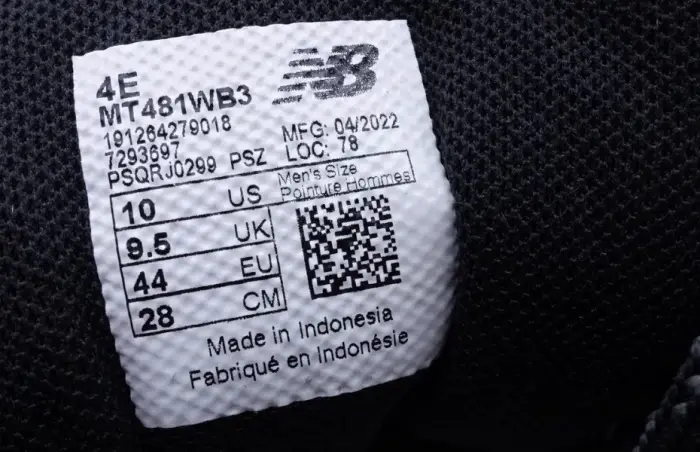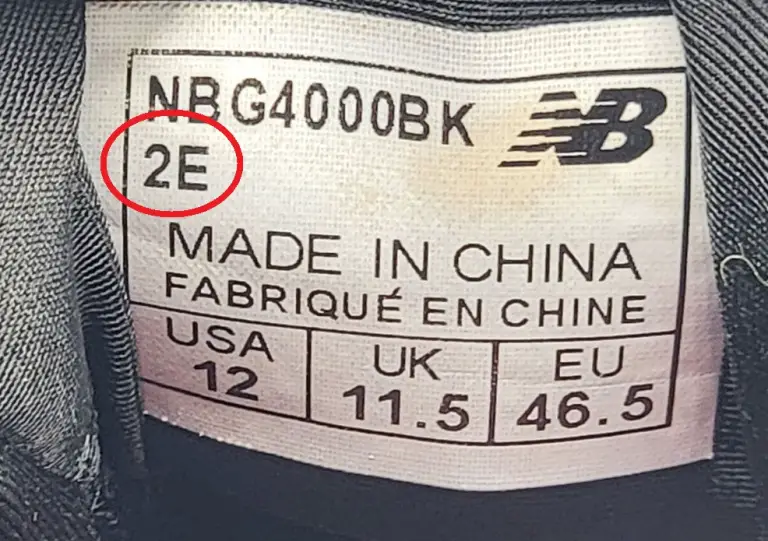Blog
What Does 2E Mean In Shoes?
What does 2E mean in shoes?
If you dig a bit deeper into the fit of footwear rather than stopping at the length, you will sometimes spot tags such as 2E or 4E on the same shoe model.
Rest assured, they have different meanings, and knowing them well enough will help you find the most fitting shoes ever.
Contents
What Does 2E Wide Mean In Shoes?
We often talk about feet’s length but rarely about feet’s width, and the width of your shoes also has an essential role in how well you can fit in your favorite footwear.
The common standard for shoe widths ranges from AAAA (4A) to EEEE (4E), from narrowest to widest. 2E stands between E and 4E because 3E is not very common.
Consequently, the size 2E means extra wide for women’s shoes and wide for men’s shoes.
Indicators For Shoe Widths
Here are some regular indicators for shoe widths that many brands use:
- A/2A/4A
A pair of shoes tagged with the letter A would be Narrow (or Extra Narrow) for women and Extra Narrow for men.
With every A added, the footwear will be narrower, hence they end up using a number to shorten the tag. Furthermore, if you see a Slim tag, it is basically the same as Narrow.
- B
Most women get B shoes, so it is considered a standard or medium width. However, it is Narrow for men.
- D
D is the common width for men, so it is a Wide fit for women.
- E/2E/4E
E is the opposite of A. It’s the tag for wide widths. The more E you see, the wider the shoes.
It might go up to 10E, which is compatible with diabetic patients.
Check more: What Does RETRO Mean In Shoes?
2E Shoe Width Size Chart (Inches, Cm)
2E Shoe Width for Women
| Shoe Size | Narrow (A) | Medium (B) | Wide (C & D) | Extra Wide (2E) |
| 5 | 2.8″/7.1cm | 3.2″/8.1cm | 3.55″/9cm | 3.94″/10cm |
| 6 | 2.95″/7.5cm | 3.3″/8.4cm | 3.7″/9.4cm | 4.06″/10.3cm |
| 7 | 3.5″/8.9cm | 3.45″/8.8cm | 3.8″/9.6cm | 4.18″/10.6cm |
| 8 | 3.2″/8.1cm | 3.5″/8.9cm | 3.95″/10cm | 4.34″/11cm |
| 9 | 3.3″/8.4cm | 3.7″/9.4cm | 4.05″/10.3cm | 4.45″/11.3cm |
| 10 | 3.45″/8.8cm | 3.8″/9.6cm | 4.2″/10.6cm | 4.57″/11.6cm |
| 11 | 3.55″/9cm | 3.95″/10cm | 4.3″/10.9cm | 4.69″/11.9cm |
| 12 | 3.7″/9.4cm | 4.05″/10.3cm | 4.45″/11.3cm | 4.81″/12.2cm |
2E Shoe Width for Men
| Shoe Size | Narrow (C and B) | Medium (D) | Wide (E/2E/EE) |
| 5 | 3.2″/8.1cm | 3.4″/8.6cm | 3.6″/9.1cm |
| 6 | 3.3″/8.4cm | 3.5″/8.9cm | 3.7″/9.4cm |
| 7 | 3.4″/8.6cm | 3.6″/9.1cm | 3.8″/9.6cm |
| 8 | 3.5″/8.9cm | 3.8″/9.6cm | 3.9″/9.9cm |
| 9 | 3.6″/9.1cm | 3.9″/9.9cm | 4.1″/10.4cm |
| 10 | 3.8″/9.6cm | 4.0″/10.1cm | 4.2″/10.6cm |
| 11 | 3.9″/9.9cm | 4.1″/10.4cm | 4.3″/10.9cm |
| 12 | 4.0″/10.1cm | 4.3″/10.9cm | 4.4″/11.1cm |
2E Compared To Other Widths
2E shoes’ meaning is crucial when you have been having trouble dealing with the wrong fit despite having measured your feet correctly.
However, the process will be much more effective if you know how 2E differs from its other width tags.
2E vs 4E
As we have mentioned above, E indicates wider shoes, and the more E you have, the larger the width.
4E is an extremely wide fit for wearers with normal foot width, so it is remarkably larger than 2E without a doubt.

2E vs D
D is a common width for men and a slightly wide fit for women while 2E is wide for men and extra wide for women.
You can conclude that 2E is much bigger than D, even 2E couldn’t compare to D.
In specific numbers, the D width ranges from 3 to 5 inches, yet the E size is always 0.2 inches larger than the D.
2E vs W
W is generally a wide fit for women, so it is about the same with C or D widths, and smaller than the E width.
We have more women who fit W shoes than E shoes, let alone 2E.
With men’s shoes, 2E and W widths can be used interchangeably.
2E vs Normal Shoes
2E shoes are wider than normal shoes for sure. With women’s shoes, the standard fit is B, which is approximately 0.7 inches smaller than 2E footwear.
This discrepancy is reduced to 0.2 – 0.4 inches for men since they naturally need a wider fit than women do.
Check more: What Does PS Mean In Shoes?
FAQs
1. How Do I Determine My Shoe Width?
The ideal shopping method would always be going to the store and trying the products out in person. The assistants at the shop would also help you if you need to measure your feet or report a flaw in the shoes you like.
You only need a pencil and a paper sheet to trace your feet and mark the extremities. The gap between your longest toe and heel is the length, while the widest part would reflect your foot’s width.
The size of each foot might have a small discrepancy, and you need to choose the bigger measurement. So your larger foot won’t be cramped in a narrow fit.
2. How Do I Tell If My Foot Is Wide Or Narrow?
If you find a pair of shoes that fit the length of your feet perfectly but the sides feel a little too tight, it is a rather clear sign that you need a wider width.
Sometimes, people seek solutions through a bigger size, though it usually means the front or the back will be looser than they should be and thus cause discomfort to your skin.
Therefore, checking if the same size has other widths is the best thing to do.
On the other hand, if you can’t seem to fit your feet in the shoes width-wise even though the length is correct, it means these shoes are narrow for you.
Even when you try to make them fit, it will only bring pain and more foot problems to you.
3. Does The Width Of My Feet Change?
Yes, even if you have stopped growing, your foot size can still change like water retention, pregnancy, increased weight, diabetes, and more. All of them make your feet swollen and grow larger than their original sizes.
Furthermore, the size of your feet can change if you have stood or walked all day long.
It’s why most experts will recommend measuring your feet after a working day ends, for it is the largest size your shoes need to accommodate.
4. What Does 2E Mean In Sneakers?
Like any other type of shoe, the E letter means Wide in sneakers. Since 1E is already considered wide, 2E would be extra wide, especially for women. 2E is the most common E-width along with 4E.
Final Words
2E shoes are wide footwear for men and extra wide footwear for women.
Although its difference from other width indicators is only ¼ inches per letter, this seemingly minimum number can decide your comfort and discomfort.
It’s always advisable to measure your feet carefully, read reliable reviews, and consult the staff so you get the best fit!

